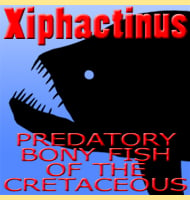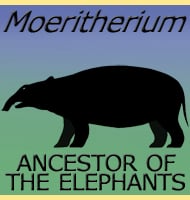In Depth
Like similar predatory birds of its day, Phorusrhacos was flightless with its wings greatly reduced in size. The wings of Phorusrhacos also had sharp hooks that seem to be more suited for gripping. These hooks have been suggested as being used to secure struggling prey as Phorusrhacos dispatched it with its beak, but it is also possible that they may have had a use in combat between Phorusrhacos individuals. Either purpose is possible, but birds like Phorusrhacos are usually depicted as hunting small to medium sized prey which may have been too small to be gripped with the wings.
The beak of Phorusrhacos is large and strongly curved to form a hook tip shape that is commonly seen in other birds that eat meat. This beak seems to have been the primary tool for killing prey with two main possible uses now generally accepted. The first method has been derived from observing the South American seriema birds which are thought to be the closest living relatives to terror birds like Phorusrhacos. Seriema birds pick up prey in their beaks and then throw it against the ground as hard as they can. Not only does this stun and kill prey, it breaks the bones so that small prey can be more easily swallowed as well as making it easier to use their claws to tear parts off prey too large to swallow. Many palaeontologists think that Phorusrhacos would have killed and eaten in a similar way, just on a larger scale.
The second method of killing prey involves using the beak to make precision strikes on critical body parts. As mentioned above, the beak is strongly curved and pointed, more so than necessary just for the purpose of feeding. It’s possible that this beak hook was brought down on top of prey for a quick strike to the back of the preys skull. This strike would have pierced the skull, causing damage to the brain resulting in instant death to the prey.
In order for Phorusrhacos to deliver a fatal strike it would first have to catch its prey, something it was well adapted to do. While the wings were too small for flight, the legs were very long and powerful. Across open ground Phorusrhacos would have easily been capable of chasing and catching up smaller mammalian prey. In hunting, Phorusrhacos may have stayed near thin outcroppings of shrubs and trees where its body form could more easily blend in with the tree trunks. Once prey approached close it could then ambush it with devastating speed before it had time to react. Once prey was caught and killed, Phorusrhacos probably used a combination of its sharp beak and the sharp claws of its feet to tear up the carcass so that it could be more efficiently eaten. While the beak of Phorusrhacos was sharp, the advantage of using the claws on its feet is clear because with these it could use its entire body weight (estimated to be as much as 130 kilograms) to push its claws through its preys body.
The suggestion has been made that Phorusrhacos and another ‘terror bird’ named Titanis are actually the same genus. However, while both birds are very similar, Titanis has a more robust build, particularly a shorter neck and heavier support for a skull. Because of this the majority of researchers continue to recognise Titanis as an independent genus, although because it is very similar it continues to belong to the same sub-family as Phorusrhacos, the Phorusrhacinae.
Further Reading
– Systematic revision of the Phorusrhacidae (Aves: Ralliformes). – Pap�is Avulsos de Zoologia. 43 (4): 55–9. – Herculano M. F. Alvarenga & Elizabeth H�fling – 2003. – New skull remains of Phorusrhacos longissimus (Aves, Cariamiformes) from the Miocene of Argentina: implications for the morphology of Phorusrhacidae. – Journal of Paleontology. 93 (6): 1221–1233. – Federico J. Degrange, Drew R. Eddy, Pablo F. Puerta & Julia Clarke – 2019.







